Food Waste AD is the short way to refer to the anaerobic digestion of food waste. In other words, extracting energy from inedible food provides renewable energy and natural fertiliser while diverting environmentally damaging waste away from landfills. That encapsulates the core philosophy of the movement towards food waste AD.
“It's a crying same that any food is wasted while so many people struggle to feed themselves. Mechanically digesting this waste, partially at least rescues the appalling situation to a degree.”
The first win when diverting food waste to an anaerobic digestion plant is the fact that the waste is not going into a landfill.
All degradable wastes have a significant greenhouse gas potential when landfilled.
Can biogas plant operators make a profit from digesting food waste?
Yes, operating a biogas plant for the digestion of food waste can be profitable.
For those who can ensure a consistent supply of feedstock (the substance being digested in the biodigester), have effective techniques for producing biogas, and can sell the biogas they generate at a profit, producing biogas is a lucrative business venture.
Food waste is a popular organic material source for biogas plants since it is affordable and sustainable. Operators of biogas plants can lessen the quantity of trash sent to landfills, where it would otherwise release methane, a powerful greenhouse gas. The biogas created from food waste can also be utilised to provide energy, heat, or fuels for vehicles that can be sold to make money.
It's crucial to remember that running a biogas plant can be challenging and necessitates careful management. The profitability of a biogas plant can be impacted by a variety of elements, including feedstock quality and quantity, biogas production efficiency, and energy market conditions.
However, the market for producing biogas from food waste is expected to expand in the future due to the implementation of nationwide regulations requiring all local authorities to provide source-segregated kitchen waste collections rising demand for renewable energy and the desire to minimise waste and greenhouse gas emissions.
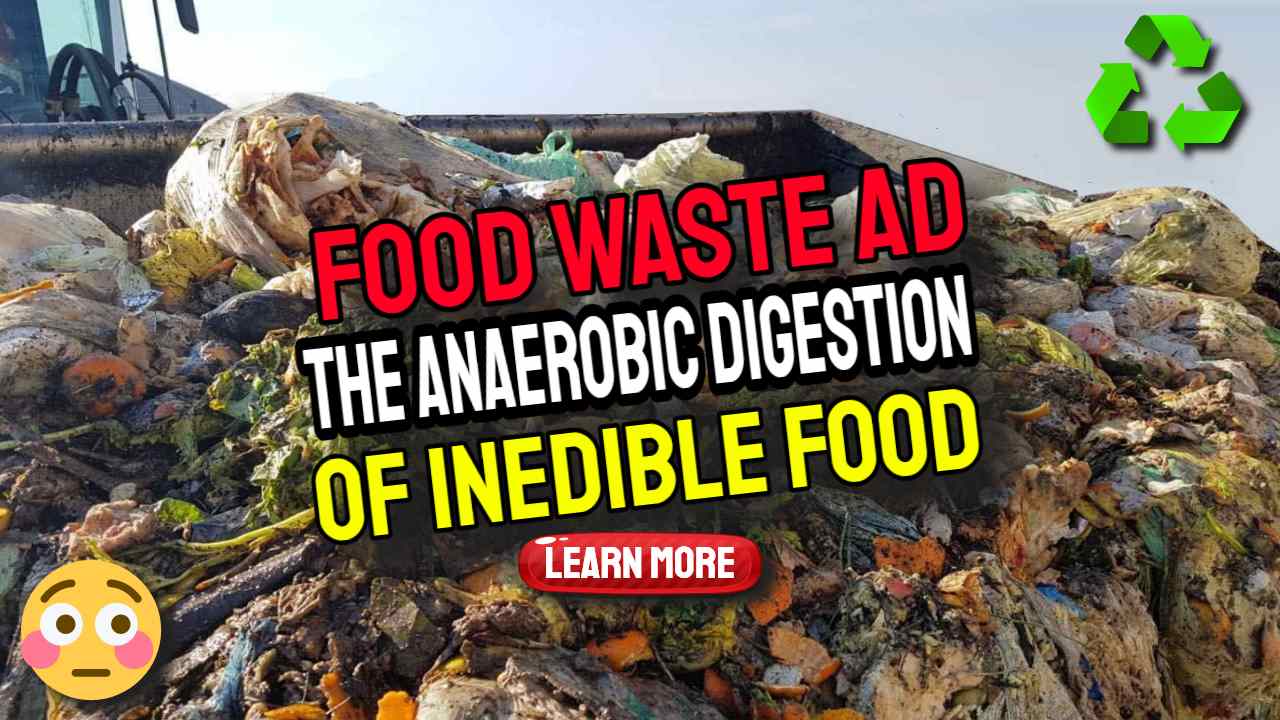
Other Benefits of Food Waste AD
For rapidly degrading high chemical and biological (COD/ BOD) content wastes, such as food/kitchen wastes, anaerobic digestion offers climate change and energy benefits over landfilling/ land-spreading.
If, as usually practised, the fibrous (solid) material which is part of the solid-liquid slurry which flows out of anaerobic digesters, is further treated by subsequent composting this provides the best of both anaerobic and aerobic treatment.
Composting has the potential to improve the structure of soils making them more productive, and reducing erosion. It's also a method which, when the composted material is spread on the land, can sequester (lock away) carbon in soils.
This in turn may confer further additional climate change benefits.
Where Does My Food Waste Go After the Council Collects My Caddy?
Have you ever wondered where your food waste goes? If you’re lucky enough to live somewhere with an organised food waste collection, you may have. Any sneaking suspicions that it might just end up in a landfill site anyway?
If you live in London, the chances are that the contents of your food waste bin are shipped to a collection site in a neighbouring county and used to produce biogas. At Bio Collectors, the largest food waste site within the M25, all the waste actually comes from businesses in the capital.
[The CCC] visited the site[in 2015] to see how the business works and understand the technical process behind it.
Located in an industrial hinterland near Mitcham in Surrey, Bio Collectors processes food waste from big-name clients like Sainsbury’s and the Shard. Other customers include schools, hospitals, hotels and food factories across London which are attracted by the relatively lower cost of ‘recycling’ food waste as compared to sending it to landfill.
The Bio Collectors fleet of trucks picks up around 50, 000 tonnes of food every year to be processed into a thick ‘soup’ that meets animal by-product standards. Around a third is then used to make biomethane which is injected into the gas grid, with the rest shipped to other sites or used in their small 0.5 MWe Combined Heat and Power (CHP) plant. via Committee on Climate Change Website.
Rob Greenfield and “The Food Waste Fiasco” 2014
The work of Rob Greenfield provides a highly visual example of the amount of food waste which can be wasted just from grocery stores if there is little or no effort made by society to distribute it to the needy.
Certainly, in the UK in recent years the redistribution of edible food waste from stores has been reduced substantially including selling it at reduced prices in-store, and sending this food to “food banks”.
It may be that such moves mean that the following example of US food waste no longer applies just as in the UK. However, the following excerpt remains an example of just how much waste food can be dumped in wealthy societies.
Rob Greenfield [adventurer, environmental activist, entrepreneur] cycled across the USA … in the summer of 2014. In the first half of the ride … promoted a happy, healthy, carefree and waste-free existence.
He left home with $2,000 in cash, no credit cards, and upon arrival in Madison, Wisconsin donated his last $421 to a non-profit.
He then vowed to travel without money the rest of the way to New York City and eat solely out of dumpsters at grocery stores and convenience stores to draw attention to, and find solutions for, food waste.
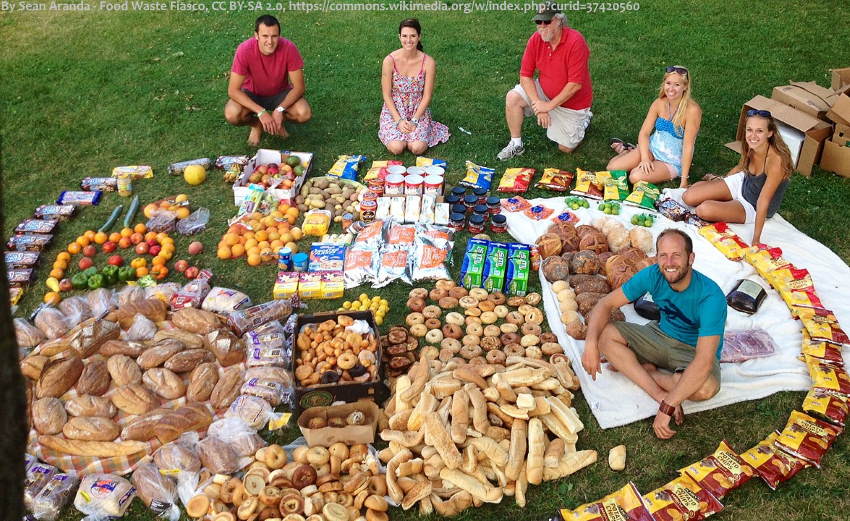
In major cities, he held what they call “Food Waste Fiascos” in which the still edible food he found in dumpsters, was displayed in one spot to show how much of it there is.
Greenfield said,
“The stats are enormous – $165 billion worth of food thrown out each year or about half of all the food we produce – but it’s hard for people to wrap their heads around numbers.
Seeing a beautiful display of a couple thousand dollars worth of perfectly good food pulled from dumpsters near them does the trick, though”.
via robgreenfield.tv
Original Article: August 2012
Just Why is the Anaerobic Digestion of Food Waste Worth Doing?
We thought that we would provide you with some of the current snippets of information out there in the news about commercial food waste AD. Firstly, it isn't just the UK that has “discovered” this renewable energy source.
Oslo Food Waste Fuels Low Pollution Buses
Food waste collected in the City of San Francisco, California, was characterized by its potential for use as a feedstock for anaerobic digestion processes.
The daily and weekly variations of food waste composition over a two-month period were measured. The methane yields of the food waste were evaluated using batch anaerobic digestion tests and, as has been seen consistently elsewhere, the analysis showed that the food waste contained well-balanced nutrients for anaerobic microorganisms. The methane yield was determined to be 348 and 435 mL/g VS, respectively, after 10 and 28 days of digestion.
The average methane content of biogas was high as well, being measured at 73%. This Food Waste AD methane yield is high, and food waste is thought of generally as the highest biogas-yielding waste source available.
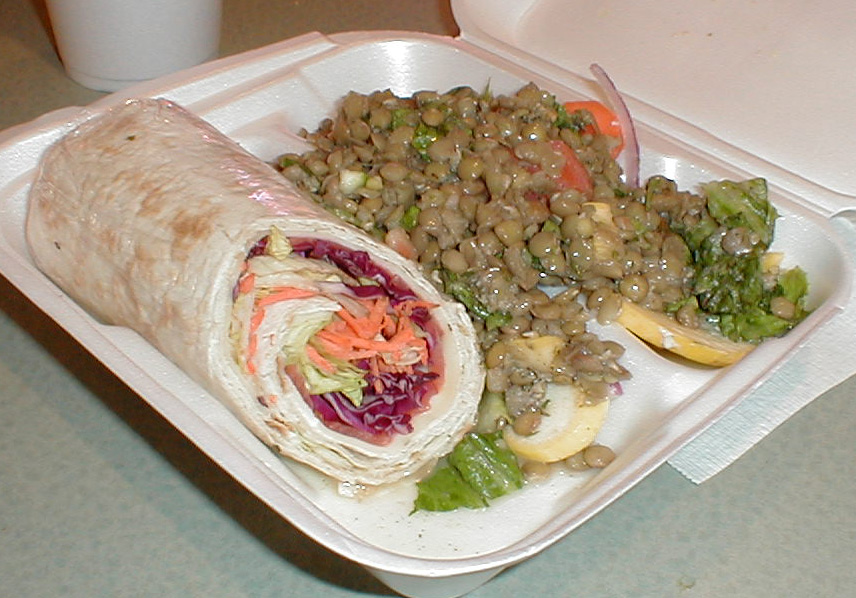 (Image: Heather from Atlanta, US – Airport food which can soon become food waste…)
(Image: Heather from Atlanta, US – Airport food which can soon become food waste…)
This means that the digester within a commercial food waste AD plant will produce more biogas per cubic metre of capacity than any other anaerobic digestion plant type. So, if anyone can make a profit from the investment in AD plant technology it will be the commercial food waste AD plant operator.
Do Commercial Food Waste AD Plants Tend to Run Out of Steam Eventually?
Early adopters who ran AD Plants some years ago reported that after more than a year of operation being fed by only food industry post-production food waste their plant mysteriously “fell over” (forgive the vernacular expression – but it is an easily understood one!), meaning stopped producing biogas for no obvious reason.
This was investigated as a major Food Waste AD problem, through more than 5 years of ground-breaking research undertaken at Southampton University, UK.
This research resulted in the publication of data which conclusively demonstrated that such clean substrates as post-production food waste do need augmentation with specific rare earth elements.
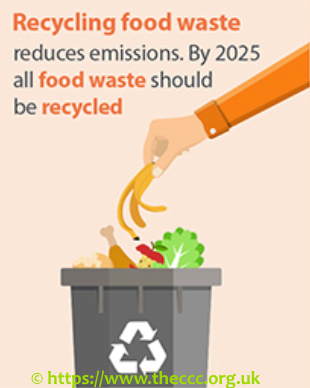
The effect of an insufficient presence of these elements in many food wastes only appears a long while after an initial reactor commissioning using WWTW sludge. Progressive food waste feeding gradually dilutes the trace elements in the initial WWTW sludge.
When those trace elements initially found bountifully in sewage sludge, but which are absent from the food waste feedstock, become ever-more-diluted over time, digestion can cease.
But, that no longer need be a problem.
Preparations are now available commercially to dose the reactor with the essential trace elements which food waste lacks.
So now, providing that the operators of food waste AD plants dose their digester tanks with the necessary trace elements, they never need to experience a digester “fall-over” event.
Correct trace element dosing has been shown to be reliable in preventing any long-term deterioration of commercial food waste AD plant performance.
More examples of Food Waste AD around the world follow:
Florida’s Municipal Solid Waste May Soon Also be Anaerobically Digested
Florida’s municipal solid waste contains a large proportion of food waste (2012).
The vast majority of their food waste is landfilled, and the authorities recognize that it can create many problems for solid waste managers, including methane emissions. It also creates a high concentration of nutrients and organic matter in leachate, and odour and vermin problems.
So, Florida’s municipal solid waste managers are currently running a project which is examining Food Waste AD (.e. the possibility of diverting this food waste from landfills for anaerobic digestion).
They also have recognized that as anaerobic digestion is a natural, microbial process that breaks down organic matter into biogas and nutrients in nature, it can be utilized just as has the equivalent in aerobic biological water treatment for more than 150 years.
They also highlight the fact that biogas can be used as a sustainable alternative to natural gas, while the nutrients are a source of organically-derived liquid fertilizer.
Other Recent Commercial UK Food Waste Digestion Projects are Operational Already
A number of these full-scale plants are already operating in the UK (2012), or about to start producing biogas, an example in East Anglia is located in Cambridgeshire.
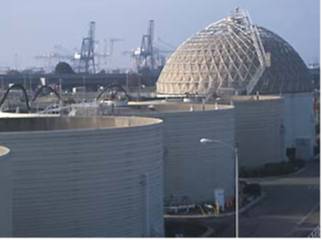 Construction has been completed on the largest food waste digestion plant in the UK's East Anglian region. Monsal, who describe themselves as the UK's leading provider of Anaerobic Digestion (AD) technology and services completed the plant in 2011.
Construction has been completed on the largest food waste digestion plant in the UK's East Anglian region. Monsal, who describe themselves as the UK's leading provider of Anaerobic Digestion (AD) technology and services completed the plant in 2011.
In this Food Waste AD project, Monsal provided the technology for a renewable energy company called Local Generation, for whom this will be their first AD plant. It will be located in March, Cambridgeshire, and the plant will process 30,000 tonnes of both packaged and unpackaged food waste each year into energy.
France Opened their First Commercial Food Waste AD plant in 2010…
According to the DEFRA archive, France opened their first full-scale food waste in 2010.
Their first food waste digestion plant in France was completed in April 2010.
Entec Biogas Gmbh was the designer, as well as the general contractor for mechanical and electrical engineering and the process commissioning of the biogas plant. The biogas plant which is located in Benet treats waste from the food and animal feed industry.
End of Original Article
2019 Updates
Food Waste in the US
US Consumers Waste at Least as Much Food as Businesses
SaveTheFood.com estimates that 20% of the food we buy is never eaten, and 90% of us throw food away too soon.
Consumers are responsible for more wasted food than farmers, grocery stores, restaurants, or any other part of the food supply chain, so changing household behaviour is key to reducing the problem of food waste. 40% of all food in America is wasted (2019).
Much of the food each person buys goes to waste, with the average American family of four spending $1,800 per year on food that they don't eat. Each individual tosses about 20 pounds of food per month, adding up to 238 pounds of wasted food a year.
In an effort to spread awareness about the importance of reducing food waste, NRDC has partnered with the Ad Council to create a PSA campaign inspiring Americans to “Save the Food” by showcasing the wondrous life cycle of food and the loss of resources when it goes unconsumed. The campaign encourages Americans to make simple lifestyle changes like making shopping lists, freezing food, and using leftovers to reduce waste in their own homes.
The campaign launched its first round of work in April 2016. Visit SaveTheFood.com to learn how to better plan, store, and cook your food. via adcouncil.org
US Action to Redirect Surplus Food to People in Need
The Natural Resources Defense Council works to safeguard the earth – its people, its plants and animals, and the natural systems on which all life depends.
But at the same time, one in eight Americans struggles to put enough food on the table (2016).
NRDC works to make America's food system more efficient and less wasteful. We help cities redirect surplus food to people in need. We inspire consumers to waste less food at home and equip them with the strategies to make it happen.
We push the food industry and the federal government to put an end to confusing date labels and adopt other waste-reducing policies. via nrdc.org
[Article first published in 2012. Updated in 2016 bs 2019. The latest update was in February 2023.]

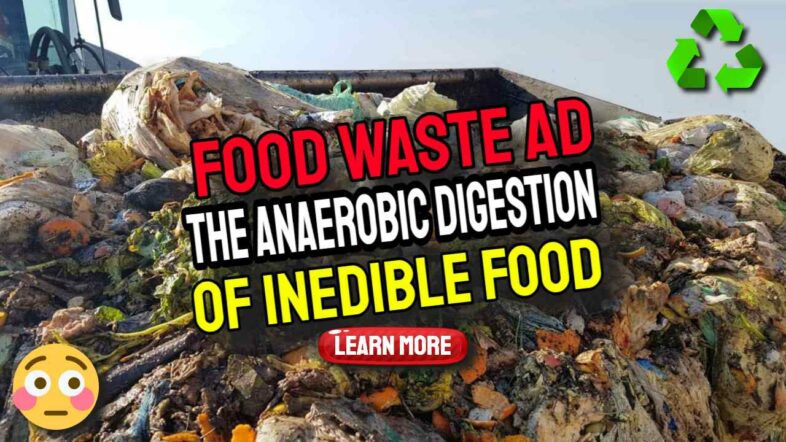
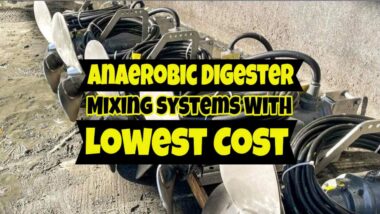
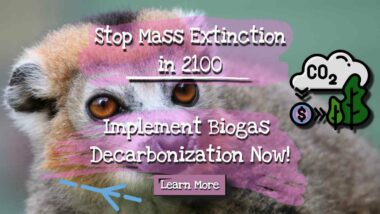

I really like what you guys are saying. I found the idea of inedible food strange.
When I saw the headline I was intrigued, but I get the subtlety.
The edible food thrown out by caterers and supermarkets MUST go to the food banks. Once I would have assumed that would be what would happen automatically, but now I see I was naive.